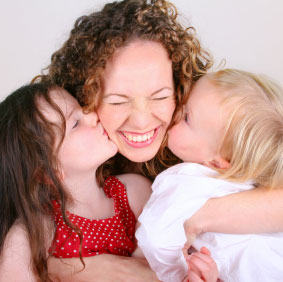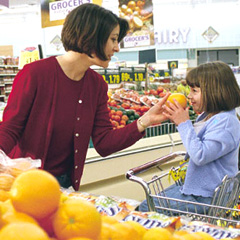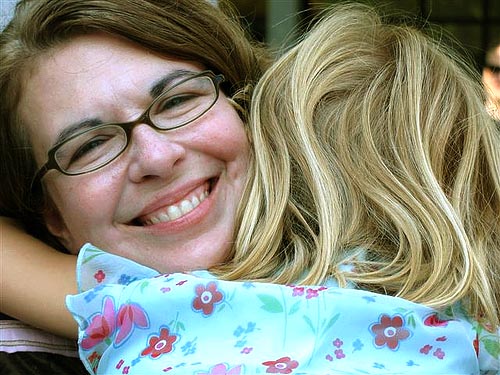Happily, children are very social little people who want to please us, and have us love them. That can be a huge asset when it comes to getting things done that we need to get done, without resistance, trauma or tears. We can make everyday tasks pleasurable for children, develop their skills and build up their self-confidence at the same time.
For example: you are having a frantically busy day, you have come home from work tired and frazzled and there are certain things that you need to get done before bedtime. Your child has had a hard day at playschool and is being fractious. How do you cope?
Getting children to do what we need them to do, while also meeting their emotional needs can be a bit of a balancing act, but there are some simple techniques that we can use to make it much easier:
Action
- Tell your child very clearly what you would like done.
- Explain to the child “why” it needs to be done.
- Thank the child afterwards for cooperating.
For example, if you are going out, and are already late, but your children are playing around and you want to get them moving, you can say:
- We will need to hurry up if we are going to get to granny’s house in time.
- Everyone in the car please.
- Well done kids, we’re on our way.
It’s bedtime and you need to put your child’s pyjamas on, but he is squirming all over the place. Rather than getting angry, or telling him he is bad, simply state the facts:
- It’s time for bed, but I can’t get your pyjamas on when you are jumping around.
- Please stand still so I can get them on.
- Good, we got them on. Now it’s story time.
You are making supper, and the kitchen is crowded. At the same time your child’s tricycle is in your way, so you say:
- I need space in this kitchen so I can make supper.
- Please move your tricycle.
- Thanks lots, supper will be ready soon.
Playfulness
Sometimes we need to make children do something, and we need to act fast. But children love fun and games and being playful, so instead of getting angry or shouting, try to make it into a game. Make eye contact, smile, laugh or quickly take physical action in a playful way.
If your child is running in the aisles at the supermarket, instead of feeling worried about how other people will react, or punishing the child:
- Pick the child up playfully.
- Laugh and hug the child while you say, “No running in the aisles. Aisles are for trolleys. You’re not a trolley you’re a person. You can run around at when we get home.”
If you need to get the kids (yours and their friends) into the car, and they are taking their time:
- Grab the smallest in your arms, shoo the rest.
- Say playfully, “Quick, let’s get into the car fast so that it turns into a space ship. Let’s see who can get there first”.
You are carrying a hot dish of stew to the table. Your child is in the way:
- Head for the table with the stew in your hands.
- Say, “Out of my way please Janie. I would hate to drop the stew on your head. Hot food for our insides, not our outsides. Okay family, supper’s up”.
Doing Things ‘With’ Children
Very small children often find it hard to do things alone. So it’s a good idea to use ‘enabling’ words (words that give the child permission to do the desired action in a cooperative way). Words like, “Let’s all… ”, “Come along now…” or “We can do this together…” help a small child to get started.
Take Sides with your Child
Sometimes children want things that we can’t let them have. At such times it is good to be “on the side” of your child in a practical and fantasy-play way at the same time.
- You are serving Munchie Muesli for breakfast, and your child starts to cry because she wants Rice Pops. Instead of saying, “No you can’t have Rice Pops, you say, “I wish I could give you the biggest box of Rice Pops in the whole world. In fact I wish I could give you ten boxes. But we don’t have any Rice Pops in the house right now. We have only Munchie Muesli today.”
- Your child is in the supermarket and wants a big toy truck on the shelf. Instead of saying, “No you can’t have it”, we can say, “I would love to be able to buy you so many toy trucks they would fill up your cupboard. Unfortunately we don’t have enough money for that, but when you get your pocket money on Friday, you can choose a small one you can afford, or save up for a big one.”
Tell Children the Benefits of their Behaviour
If you want to get your child into bed, you can say, “Jump into bed now, and then I will come and read you a story”.
If your child’s homework is still not done, you can say, “Let’s get the homework done now, so you can watch your favourite DVD”.
If you would like help with the dishes, you can say, “Come and help me do the dishes now, then we can play a game”.
Remember to acknowledge afterwards that he or she has done what you requested. Words like, ‘thanks for helping’, ‘that was quick’ or ‘I see you have done it all’ are reaffirming to children.
When children get their inner tanks well filled up with love and physical warmth, they are happy people, and happy people are more likely to work with us and be willing to cooperate. So love your children lots and hug and hold them often. You can never give a child too much love. They thrive on it.
Understanding what Children Hear
We need to remember to watch how we say things. When we label children or call them names, they believe us and act in accordance. It also discourages them and damages their self-esteem. If we call children silly, lazy, stupid, slow, careless, untidy, disobedient, etc., they will believe that is what they are. They won’t know what to do about it, how to change, or how to do whatever it is we want them to do.
However, if we simply describe the undesirable behaviour, say how it affects us, and describe what can be done to fix it, children are empowered to take action, and are left with a positive image of themselves. That is because we are the mirrors who reflect back to our children a picture of who they are. They will believe whatever we reflect to them. This is how they come to develop a good or a bad self-image.
For example, if your child’s toys are lying all over the floor and you want them moved, here are two very different ways of going about that, and how each one will affect the child.
What not to say:
“You terrible, untidy child, why can’t you pick up your toys?” In this case your child hears that she is terrible, untidy and can’t pick up her toys. She will believe you and feel helpless and bad about herself.
What to say:
“I get upset (feeling) when the toys are lying all over the floor (the situation) as I trip over them (the tangible effect of the situation on you). What the child hears is, “Mom gets upset when my toys are lying on the floor, as she trips and falls over them. I can solve the problem by picking them up”. She doesn’t get any bad messages about herself, and you give her the opportunity to fix the situation.
Helping them Find their Own Solutions
When children are older, it is often good to simply describe the problem and let them decide how to fix it. Using the example above, we would just tell the older child about the fact that his toys on the floor are a problem, and say how we feel about it. He could then use his own initiative and decide to solve the problem, by picking up his toys. Smaller children might need us to say, “Come and let’s pick your things up together”. We need to keep in mind the physical, emotional and cognitive developmental level of the child, and what he or she is able to do at their particular stage of development.
Dealing with Our Feelings
When we feel things intensely, we need to be able to communicate our feelings to the child. We might want to say, “I feel tired… ”, “I feel sad…” or even, “I feel angry… ” Anger is a tricky one though, as some children are very afraid of anger. So whenever it is possible, it is better to rather say, “I am feeling ‘upset’ about…” Pick your battles, and save the stronger words for when they are really needed, and preferable not if your anger is triggered and you are in danger of flying off the handle.
Also we often experience anger when we are really in a state of shock. Let’s imagine that our child ran out into the road and nearly got knocked down by a car. Instead of yelling, “Look where you are going, you nearly got killed”, we can quickly tune into what we truly feel. Then (with our heart still pounding) we might say, “Phew! I got the fright of my life. I thought you were going to get knocked over. Thank goodness you are safe”. The child will understand the seriousness of the situation by the intensity of our voice, but not have to fear our anger. As a result it easier for him to learn from his experience and change his behaviour.
Dealing with Children’s Feelings
We have the right to express all our feelings, so long as we remember that children have the right to do that too. When they feel sad, they need to be allowed to cry, when they feel happy they need to be allowed laugh and when they feel angry, we need to let them express their anger as well. Sometimes we need to limit their behaviour, and remind them that “no”, means “no”. But we should always allow them to express their feelings about the boundaries we have set, in a safe way, with crying or anger if needed, without letting them hurt themselves or anyone else. When feelings are expressed at the time they are triggered, they don’t get bottled up. That makes for more relaxed and cooperative children.
- Cohen, Larry. 2001. “Playful Parenting”. New York: Ballantine Books
- Faber, Adele and Mazlish, Elaine. 2012 (Updated). “How to Talk so Kids will Listen and Listen so Kids will Talk”. New York: Harper Collins
- Gordon, Thomas. 2000. “Parent Effectiveness Training”. New York: Ballantine Books
- Grille, Robin. 2005. “Parenting for a Peaceful World”. NSW, Australia: Longueville Media
- Solter, Aletha, 1989. “Helping Young Children Flourish”. California: Shining Star Press
Written by Pat Törngren © 2012
Note





Hi Pat
Great to see your site is up, I’m super glad for you. Great article, by the way. 🙂
Love,
Caleb
Great read! Lots to learn 🙂